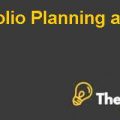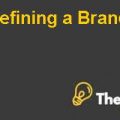AD713 Derivative Project Case Study Solution
Profile of Client
The client is Thrifty Saver, who is 55 years of age and a successful entrepreneur business owner. During the span of his career, he amassed a large sum in savings totaling $5 million, which he has divided into two separate accounts: $2.5 million in a retirement account (80% in equity and 20% in fixed income) and $2.5 million in a non-retirement account. His wife, Prudence Saver is 52 years old and has been a housewife/stay-at-home mother primarily. Together they share two children, Jack and Jill, who recently graduated from their respective universities and landed jobs with potential growth opportunity for advancement with retirement benefits, choosing instead not to participate within the family’s business.
Thus, Thrifty and Prudence no longer need to support their children. Thrifty’s income is approximately $400,000 annually, of which he contributes $20,000 each year to the equity portion of his retirement account. Thrifty currently owns a fully paid home with a market value of around $1.5 million, which he jointly shares the deed to with Prudence. They have no outstanding debt at the moment. Thrifty plans to retire in 5 years and sell his stake of the company to his friend/co-owner.
Thrifty’s personality can be characterized as follows: one who is ambitious and open-minded man, does not hesitant to take risk or adopt new changes, which can be directly reflected in the way he manages both his business and personal life. His company often targets high growth and may willingly take some level of risk to achieve that growth potential. Additionally, even though his business is totally unrelated to finance or carry a strong financial background himself, Thrifty does have a good knowledge about finance and would want to see a detailed explanation of investment strategies from the investment advisor.
Goals and Objectives of the Client
As aforementioned, Thrifty has accumulated a substantial amount of savings after many years of working, and will enter into retirement after 5 ’ time. Thus, his main objective is to achieve high growth potential of his current assets/portfolio to prepare for the impending retirement stage of his life. The overall outcome he desires upon retirement is to continue maintaining his hard-earned quality of life, carefree lifestyle, and financial freedom.
Since he carries no significant financial obligations, or need to support his children or grandchildren, Thrifty anxiously awaits our proposal. For these reasons, the main objectives for Thrifty should be strong capital growth over the next 5 years, then a stable source of income when he enters his retirement . Specifically, he would like to achieve at least 15% annual growth rate of his portfolio in the next five years, and then stable returns of 5-8% when he reaches the retirement age.
Risk Tolerance
Risk tolerance is undeniably the most crucial part of planning an investment strategy for individual clients. Risk tolerance refers to the level of risk that an individual would be willing to accept. Generally, people are often risk averse, which means investors would require higher return for higher level of risk, or investors would choose investment options with the lowest volatility if all options having similar expected returns. The risk tolerance level of an investor typically depends on their personality, wealth, or knowledge.
In Thrifty’s case, we consider his level of risk tolerance to be fairly high, because he currently holds a rather large sum of wealth with limited financial obligations. His personality also shows him as someone who is willing to take risk, as he is an entrepreneur and has accepted a significant amount of risk for that business, making him familiar with risk taking and confident in his ability to recover from temporary setback, such as unfavorable market conditions.
He also possesses strong knowledge in finance matters and understands the concept of risk equals return trade-off, thus he would not panic if he suffers some losses in the process. His objectives of gaining significant growth in capital would also come with an abnormal level of risk. For these reasons, utilizing options to achieve his objectives is an appropriate strategy, as he would be able to accept some risky investments in order to maximize the growth of his capital.
Portfolio and Derivative Strategies, Securities and Asset Allocation
Retirement portfolio:
The retirement portfolio totals $2.5 million, of which 80% would be equity (equivalent to $2,000,000) and 20% would be fixed income (equivalent to $500,000). Thrifty will continue to contribute $20,000 per year to the equity portion of his investment account. The asset allocation in retirement portfolio is determined by Thrifty, and the assumption is that returns on equity would be 10% and return on fixed income would be 6% annually. The return from his retirement portfolio would also be non-taxable..............
AD713 Derivative Project Case Study Solution
This is just a sample partial case solution. Please place the order on the website to order your own originally done case solution.













